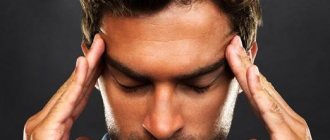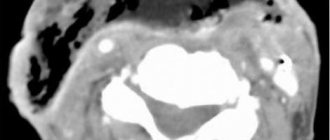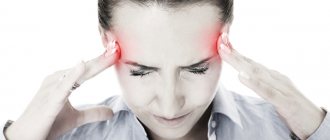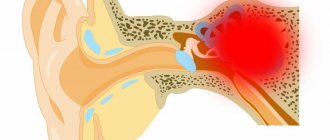Content:
- General information
- Indications for use
- Phenazepam: narcotic effects and psychoneurotic disorders
- Adverse somatic disorders
- Drug addiction
- Side effects of long-term use
- Overdose
Many medications cause narcotic effects. One of them is phenazepam, the side effects of which (various mental disorders, the development of drug addiction) led to the fact that the pharmacy chain began to dispense it only by prescription. But those who like to “expand consciousness” manage to bypass existing prohibitions and use the substance for non-medical purposes.
Phenazepam addiction: symptoms and signs
Dependence develops when the medication is used in high dosages for a long time. Exceeding the therapeutic dosage by 5 times leads to drowsiness, euphoria, and relaxation. If you significantly increase the dosage, the person will feel a surge of strength. Due to the increased load on the central nervous system, aggressiveness may increase.
Treatment of withdrawal syndrome after quitting alcohol is carried out with a minimum dosage of 5 mg per day. A person takes the first tablet in the morning and the second in the evening. Prescribe pills with caution because dependence may develop. The maximum dosage in severe cases is 10 mg per day under the strict supervision of a doctor. Treatment with Phenazepam is carried out carefully and lasts no more than 60 days, often only two weeks are enough. Drug addicts never follow instructions, so they can take tranquilizers in huge dosages for several months in a row.
Addiction appears quickly on a physical and psychological level. A person cannot control himself and constantly runs to the pharmacy for more pills. Knowing full well about the severe side effects, the addict continues to drink the medicine in huge quantities. The condition is constantly getting worse because:
- It is impossible to stop taking medication on your own. Dependence is observed at the mental and physical level.
- Inappropriate behavior gradually destroys all areas of life. Drug addiction causes loss of work and family, destruction of health, and personality degradation.
- Severe intoxication of the body leads to chronic and acute diseases of internal organs. If you take the pills for a long time, the consequences can be irreversible.
After consumption, a person experiences a state similar to alcohol intoxication. Coordination decreases, making it difficult to hold objects in your hands or walk in a straight line without staggering. Talkativeness increases, and speech becomes rapid and unintelligible. The pupils dilate and the skin turns pale. The mucous membranes dry out, which leads to an accumulation of dried saliva around the mouth. Due to poisoning of the gastrointestinal tract, a white or yellowish coating accumulates on the tongue. The appetite disappears, so the person stops eating normally. This leads to significant weight loss of up to 10-20 kg in a few weeks. When intoxication passes, weakness appears due to depletion of the central nervous system. The person wants to sleep, the limbs go numb, and there is pain in the head.
The symptoms of taking Phenazepam are approximately the same as when using barbiturates. After taking a huge dosage, motor activity increases. Moreover, chaotic body movements are difficult to control. Outwardly, a person looks as if he has lost something important and is looking for it. At the same time, he constantly switches to different objects, his attention is unfocused. Reaction speed is slow and hearing is reduced. If you ask him a question, he may not hear you or ask again with a huge delay. In general, intoxication from Phenazepam can be determined by the following symptoms:
- Impaired coordination of movements.
- Pale complexion.
- Unsteady gait.
- Increased talkativeness, even if the person is reserved and does not like to communicate with people.
- Sudden deterioration of vision.
- Complete lack of appetite.
- Unintelligible speech.
To achieve this effect, you need to exceed the therapeutic dosage by 3-4 times. The narcotic state lasts up to 10 hours, and in case of renal and liver failure up to 12-14 hours. Increased tolerance may result in the drug being used intravenously. The dosage is gradually increased. In case of an overdose, the condition noticeably worsens, which leads to the following consequences:
- Irrhythmic breathing.
- Cramps.
- Coma.
If you do not call an ambulance in a timely manner, death is possible due to respiratory arrest.
General information
The drug belongs to the benzodiazepines. It was synthesized at the end of the last century for use in military medicine, then it was used to treat those addicted to alcohol. Today, the production of phenazepam is prohibited in most countries of the world. It continues to be used as a prescription drug in some post-Soviet countries.
What is the mechanism of action of this drug? It affects the receptors of GABA - gamma-aminobutyric acid, the presence of which determines the processes of excitation and inhibition. Neurons of almost all brain structures are “equipped” with such receptors, so phenazepam affects many of its functions.
Why you can’t take Phenazepam for sleep after a binge without consulting a doctor
The decision to use any drug, especially a potent tranquilizer, should be made only by a doctor. Even if a person has previously taken Phenazepam after a binge, this should not be done again under any circumstances. The dosage regimen is always selected individually, depending on the presence of certain symptoms. So, if withdrawal is manifested only by sleep disorders, one tablet at night is enough, but with severe anxiety or signs of psychosis, a higher dosage is required.
In addition, Phenazepam and binge drinking are completely incompatible. The fact is that alcohol and benzodiazepines act on the same neuroreceptors, and alcohol greatly enhances the inhibitory effect of tranquilizers. This is dangerous due to severe overdose, even leading to coma. This is why Phenazepam is used after a drip for binge drinking, since detoxification helps cleanse the body of ethanol and acetaldehyde formed during its breakdown.
When prescribing Phenazepam after a binge, how much to take the medicine is also determined by a specialist. To avoid complications, the average duration of use is 10–14 days, after which the dose is gradually reduced to 0.25–0.5 mg at bedtime, and after all symptoms disappear, the drug is discontinued, gradually reducing the dosage. If indicated, drug therapy is continued with the use of antidepressants, milder sedatives and drugs for general restoration of the body.
Indications for use
When taking this substance, the following effects develop:
- anti-anxiety;
- anticonvulsant (anticonvulsant);
- hypnotic;
- sedative (calming);
- muscle relaxant (this means muscle relaxation).
Phenazepam is prescribed to patients with diseases that cause:
- anxiety;
- panic attacks;
- fears;
- irritability;
- psycho-emotional instability;
- epileptic seizures;
- insomnia.
Phenazepam: narcotic effects and psychoneurotic disorders
If the medicine is taken in higher dosages, side effects such as:
- positive emotions;
- improved mood despite any life problems;
- feeling of lightness in the body;
- feeling of weightlessness and flight.
If phenazepam is used for a long time, psycho-emotional disorders develop:
- aggression;
- hallucinations;
- mood swings;
- lack of objective perception of the world.
Please note: Lack of control of behavior is characteristic - a drug addict is able to do something that he would not have dared to do before. Psychomotor agitation usually occurs, but emotional retardation may also occur.
Side neurological problems also appear. Often these are failures for which phenazepam is indicated, but in higher dosages it itself provokes them - for example, sleep disorders and convulsions. In addition to them, there are:
- inability to concentrate;
- incoherence of speech;
- memory impairment;
- failure of thinking;
- violation of orientation in space and time;
- dizziness;
- headache;
- trembling of the upper and lower extremities;
- nystagmus is involuntary oscillatory movements of the eyeballs.
Adverse somatic disorders
When taking phenazepam, the time of action on other structures of the body is the same as on the nervous system - its effects appear from 6 to 18 hours (this is the half-life). Then the symptoms weaken.
Somatic disorders are most often observed from:
- cardiovascular system - increased heart rate, hypotension (low blood pressure);
- gastrointestinal tract - dry mouth, impaired bowel movements (evacuation of the large intestine);
- urinary system - irregular urination.
This is a partial description of the effect of phenazepam on humans - other side effects are possible. Characterized by pale skin, hyperhidrosis (excessive sweating). The addict may feel chills. He complains of deterioration in general health, lethargy and weakness.
Drug addiction
She appears quite quickly. First, a mental addiction arises - the addict likes the positive emotions that phenazepam causes, and he does not want to give it up. After 2-3 weeks, a physical addiction forms. The substance becomes part of the metabolism; the body perceives its absence as a violation and reacts with pathological manifestations.
Syndrome o) is associated with physical dependence. It occurs if an addiction has formed, but the addict suddenly stopped using phenazepam. Characteristic:
- irritability;
- tearfulness;
- anxiety;
- depression.
A drug addict suffers from insomnia, and if he manages to fall asleep, he has nightmares. The person is extremely tense, he develops various fears and paranoid reactions (increased suspicion). Appetite disappears, body weight gradually decreases.
Rehabilitation after using phenazepam.
As stated above, rehabilitation from phenazepam is an extremely painstaking and complex treatment process. This requires a professional and flexible approach. The rehabilitation center in St. Petersburg “StopNarco” in its rehabilitation program uses an integrated approach to the treatment of phenazepamide addicts, which consists of the simultaneous use of a 12-step recovery program, the most modern medication techniques, and high-quality psychotherapy. The peculiarity of treating addiction to this drug is the need to eliminate both physical addiction and uncontrollable psychological attraction. For this purpose, our staff includes highly qualified psychologists and psychotherapists. However, the rehabilitation process requires the presence of competent rehabilitation specialists who monitor and control the overall recovery. Also, if necessary, they can adjust the treatment program, which allows them to use a flexible, adaptive approach to each patient.
Our drug rehabilitation center “StopNarko” in St. Petersburg is equipped with all the necessary conditions: cozy rooms, modern medical equipment, high-quality kitchen, recreation areas, rooms for group and personal therapy. All this allows our patients to feel as comfortable as possible during the treatment process from phenazepam.
Independent attempts to influence or treat a phenazepam addict will most likely only lead to aggravation of the situation. There is a high probability of aggravating the health status of the drug addict, causing irreversible changes in his physical and mental health, triggering a psychiatric diagnosis, as well as death.
As soon as you realize that there is a problem with addiction to phenazepam, you should immediately seek urgent drug treatment help from experienced specialists at the StopNarco clinic in St. Petersburg. People's lives are important to us, so we will be happy to help you or your relative save a life, get it back on track and get freedom from any form of addiction. You can call us at any time of the day.
Side effects of long-term use
The body develops an insensitivity to phenazepam. This means that after a certain time, the effects it causes wear off. It is difficult for a person without positive emotions, and he increases the dosage. In response to this, tolerance increases even more.
With long-term use, the drug has side effects such as:
- constant weakness;
- deterioration in working capacity - intellectual and physical;
- psycho-emotional instability;
- increasing intellectual impairment.
The picture of physical exhaustion is complemented by mental exhaustion. The person becomes depressed, silent, and develops a depressive state. Suicidal thoughts may appear.
Reviews
Andrey K .: “I took phenazepam for three months, after which I decided to stop taking it on my own. I knew that I shouldn’t drink this drug or alcohol, and there were holidays ahead. After stopping the use of phenazepam, I began to experience severe muscle pain, nausea, and aggressiveness. I think it's like a drug addict going through withdrawal. I had to see a doctor and resume taking it.”
Tatyana M .: “I stop taking phenazepam gradually, as the doctor advised. I drank this substance for a very long time, almost six months. Now you can switch to other drugs, but the doctor said that you can’t suddenly quit phenazepam. I used to take 4 mg, but now I’ve reached 3.2 mg. The only thing I don’t like is that it’s inconvenient to divide the tablet into parts.”
Doctor's review: “Fenazepam has many unpleasant features. One of them is the deterioration of the patient’s condition when abruptly stopping its use. As a rule, symptoms develop when you stop using the drug without authorization. Such patients present to the clinic with symptoms exceeding those for which they were initially treated. Therapy has to start all over again, one might say, from scratch.”
Content
Overdose
If the body develops tolerance to phenazepam, the effect of the drug weakens - the addict is forced to take an increased dose. This may lead to an overdose. First of all, it is evidenced by:
- increased heart rate;
- hypotension;
- respiratory depression;
- impaired reflexes;
- deterioration in the reaction of the pupils to a light stimulus;
- darkness of consciousness.
Severe side effects are also common - hallucinations, convulsions, delusional reactions. If the addict is unable to stop and continues to take phenazepam, a coma occurs very quickly, which leads to death.
Treatment of phenazepam addiction in St. Petersburg.
The drug treatment clinic at StopNarco in St. Petersburg organizes comprehensive treatment for phenazepam addiction, which is carried out in a certain order . However, before starting treatment, each patient undergoes an examination and consultation, the results of which allow specialists to select the most effective procedures and methods for treating phenazepam addiction in his case. This flexible approach to each client allows us to achieve sustainable results in the fight against this addiction. Highly qualified specialists of our institution have developed and apply their own methods in combination with existing proven technologies . The course of treatment for phenazepam has the following sequence:
- Diagnosis and consultation of the patient . This stage includes an examination and conversations with the patient by our specialists, this helps to identify all the subtleties of health and the course of drug addiction.
- Cleansing the addict's body . At this time, the body detoxifies from harmful substances and drug residues. This allows you to bring the patient’s blood composition back to normal and return him to good health.
- Medication course of treatment. At this stage, the drug phenazepam is completely withdrawn through the use of safe medications with similar effects. Also during this time, the patient undergoes therapy with useful pharmacological drugs that restore his health and normalize his psycho-emotional state. Also, if symptoms that were eliminated by phenazepam occur, alternative medications that do not cause side effects and addiction are selected for the patient.
- Rehabilitation program of psychotherapy . This is an extremely important and difficult stage in the treatment of phenazepam addiction. During this period, the patient and staff have to make a lot of efforts to effectively recover from this form of drug addiction.
Phenazepam is an inexpensive and extremely effective drug, and is often used without a medical prescription. However, addiction to phenazepam can only be eliminated in specialized clinics under the supervision and control of narcologists. The drug treatment clinic “StopNarko” in St. Petersburg is a medical institution that employs top-class specialists. Don’t let phenazepam addiction develop to a chronic stage - call us today and get a chance for a drug-free life. Our center has helped a very large number of patients, and your case will be no exception.
Literature:
- The danger of phenazepam as a street drug / Chekulaev Matvey Igorevich, Maksimova Tatyana Vladimirovna, Barsegyan Samvel Serezhaevich / 2015 / Medical and pharmaceutical journal “Pulse”.
- Phenazepam: 25 years in medical practice / S. B. Seredenin [et al.]. - Moscow: Nauka, 2007. - 380 p.
- Pharmacology of sleeping pills: a textbook for students in the specialty programs “General Medicine”, “Pediatrics”, “Pharmacy” / [I. A. Vinogradova, V. D. Yunash, S. V. Goranskaya, etc.] ; Ministry of Science and Higher Education of the Russian Federation, Federal State Budgetary Educational Institution of Higher Education "Petrozavodsk State University". — Petrozavodsk: PetrSU Publishing House, 2021. — 42 p.









